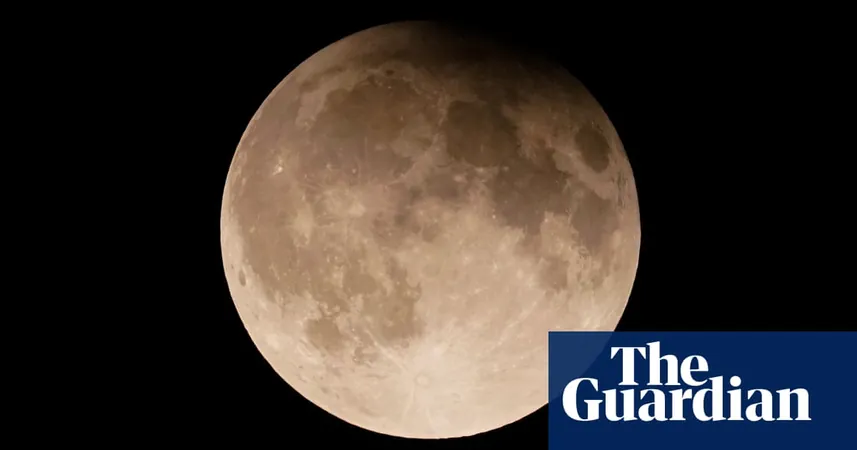
Earth’s ‘Mini Moon’ Set to Vanish: Is This a Chunk of Our Own Moon?
2024-11-25
Author: Jacob
Earth’s ‘Mini Moon’ Set to Vanish
A fascinating cosmic event is taking place as Earth's so-called mini-moon, designated 2024 PT5, embarks on its journey towards the sun starting this Monday. This asteroid, which is approximately the size of a school bus, has been a part of our celestial neighborhood since September, but it will be slipping away until it returns in 2055.
Speculation Around Its Origin
Astronomers have speculated that 2024 PT5 might actually be a fragment of the moon that broke away long ago, possibly due to a collision with another asteroid. Currently situated about 2 million miles (3.2 million kilometers) from Earth—nine times farther than our natural satellite—it was never captured by Earth's gravity due to its distance. However, in January, it will make a close approach, coming within 1.1 million miles, providing a final chance for observations before being pulled deeper into the solar system by the sun's gravitational force.
Observations and Monitoring
Despite its small size of roughly 33 feet in diameter, 2024 PT5 has remained beyond the visibility of the naked eye, requiring powerful telescopes to detect. NASA has been closely monitoring it through their deep space network after it was first observed via a telescope in South Africa, belonging to the University of Hawaii, in August. Officials state that the asteroid is not the result of human activity, affirming that it is indeed a natural object.
Expert Insights
Josh Handal, a program analyst at NASA’s Planetary Defense Coordination Office, explained, “Considering the motion of asteroid 2024 PT5 resembles our Earth’s orbit, it’s likely a significant piece of rock ejected from the moon's surface during a historical impact with an asteroid.”
Close Pass and Future Track
For the past two months, this mini-moon has been tracing a horseshoe-shaped orbit around our planet. With the sun’s gravitational influence increasing, it will accelerate dramatically, reaching speeds at least double that of its September velocity during January’s close pass. Throughout that time, NASA plans to utilize the Goldstone solar system radar antenna in California's Mojave Desert to track 2024 PT5 diligently for over a week. Its return in 2055 promises another opportunity for a temporary and partial orbit around Earth, sparking interest among astronomers and space enthusiasts alike.
Final Observations
So mark your calendars! This little cosmic wanderer, potentially a moon fragment, is a must-watch before it vanishes from our skies for over three decades!









 Brasil (PT)
Brasil (PT)
 Canada (EN)
Canada (EN)
 Chile (ES)
Chile (ES)
 España (ES)
España (ES)
 France (FR)
France (FR)
 Hong Kong (EN)
Hong Kong (EN)
 Italia (IT)
Italia (IT)
 日本 (JA)
日本 (JA)
 Magyarország (HU)
Magyarország (HU)
 Norge (NO)
Norge (NO)
 Polska (PL)
Polska (PL)
 Schweiz (DE)
Schweiz (DE)
 Singapore (EN)
Singapore (EN)
 Sverige (SV)
Sverige (SV)
 Suomi (FI)
Suomi (FI)
 Türkiye (TR)
Türkiye (TR)